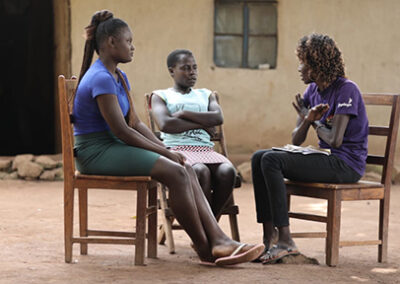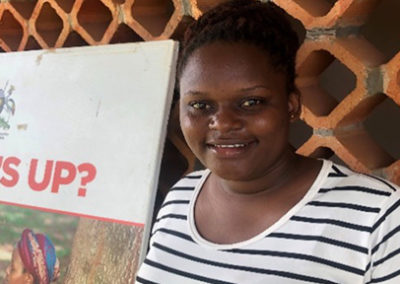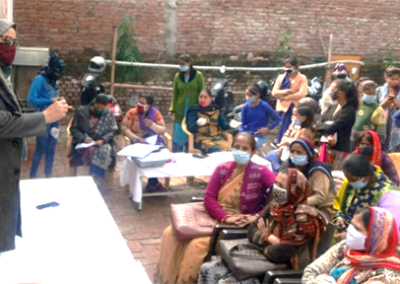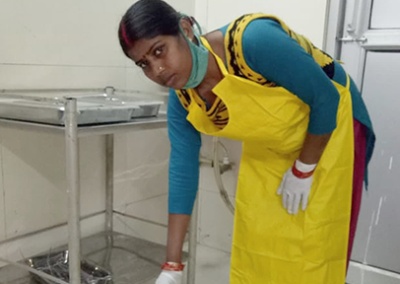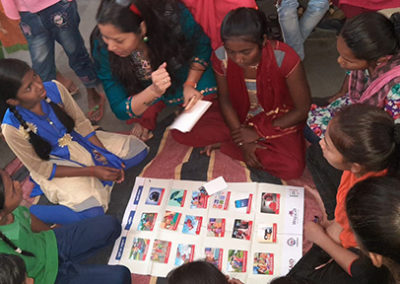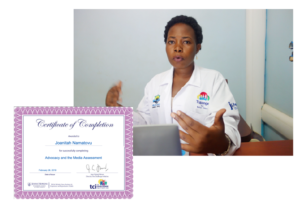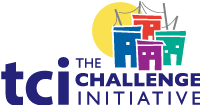TCI Global Toolkit: Service Delivery
Whole-Site Orientation to Family Planning- Home
- Help and Support
- Close
- Toolkits
- Global Toolkit
- AYSRH Toolkit
- Hub Toolkits
- Core High-Impact Practices
- Gender Essentials Mini Course
- Close
- Resource Collection
- Community of Practice
- Coaching
- Log In/Register
- My Profile
- English
What Is It?
 The whole-site orientation approach targets all staff working in a health facility – both clinical and non-clinical , even security guards and receptionists – to become advocates for family planning and adolescent and youth sexual and reproductive health (AYSRH).
The whole-site orientation approach targets all staff working in a health facility – both clinical and non-clinical , even security guards and receptionists – to become advocates for family planning and adolescent and youth sexual and reproductive health (AYSRH).
All facility staff receive “orientation” training to gain a basic understanding of family planning/AYSRH and its benefits. When a client encounters any staff member at the facility, that staff member is then able to either counsel and provide family planning/AYSRH services to the client or direct the client to someone else who can.
Orientation sessions are “low-dose, high frequency” – that is, the sessions are shorter and spread out over many days to avoid taking staff away from their posts for long periods of time and avoid disruption to services. The sessions also take place at the facility itself.
What Are the Benefits?
- Ensures that there are no missed opportunities to promote and provide family planning/AYSRH information and services
- All staff at the facility have basic knowledge of family planning/AYSRH; minimizes myths and misconceptions that staff themselves may have
- Addresses facility-related barriers to accessing family planning/AYSRH services; for example, security guard teasing an unmarried woman for seeking family planning services or client getting lost trying to find the family planning clinic
- Serves as platform to support provider-initiated family planning/AYSRH services
Who Can Participate in the Orientation Sessions?
- Doctors, midwives, nurses, clinical officers, nurses aides, and any other clinical staff
- Receptionists, security guards, housekeeping staff, lab technicians, and other non-clinical staff
- Providers and staff from neighboring private clinics
- Pharmacists and pharmacy staff from surrounding areas
- Anyone else who might interact regularly with a potential family planning/AYSRH client
Whole-site orientation (WSO) on family planning and AYSRH is a stand-alone approach in the East Africa and Francophone West Africa toolkits, while in India and Nigeria toolkits it is one of a number of capacity strengthening activities that can be found in their strengthening provider capacity and quality improvement approaches, respectively. In all geographies, WSO is implemented in one session or several recurring sessions, depending on the knowledge gaps identified at a particular facility and the topics to be covered.
How to Implement?
Identify and develop a list of topics to be covered within a specific time frame
Facility trainers along with facility in-charges should plan a schedule of topics that can be completed within a two-month period.*
Topics can be broad or specific, depending on what facility staff want to learn about and/or any identified knowledge gaps. In addition to covering family planning in general, the East Africa orientations focus on interpersonal communication skills, commodity management, and correcting family planning myths and misconceptions, especially about long-acting reversible contraceptives (LARCs), among staff. Staff were oriented to refer appropriate clients who were visiting the facility for other reasons to the family planning room for counseling and services.
Topics to be covered in WSO sessions include the following:
| Family planning overview | Barrier methods | Natural methods |
| Family planning counseling | Combined oral contraceptives | Lactational amenorrhea method (LAM) |
| Family planning benefits | Progestin only pills | Record keeping and commodity management |
| Family planning policies | Injectables | Myths and misconceptions |
| Adolescent and youth-friendly services | Implants | Infection prevention |
| Medical eligibility criteria | IUCD | IEC materials – Family planning promotion in the community |
| Communication with young people | Permanent methods | Provider-initiated family planning |
* The East Africa Hub recommends that the entire training take no longer than two months to cover all the topics.
Develop content for each session
Each session should be short* (about 2 hours or less).
Materials can be adapted from TCI University or you can adapt this slide presentation developed by Tupange Pamoja to implement your own WSO.
* East Africa’s orientation entailed 12 one-hour sessions at the facility at a convenient time that minimized disruption of services.
Determine who will conduct the training
Trainers can be facility mentors, trainers, and facility managers, and they can take turns conducting orientation sessions.
Organize weekly sessions to learn about a single topic
Set aside a room at a facility and arrange the tables and chairs to suit the learning environment. All participants should be able to easily see and hear the trainer and any presentations.
By the end of the orientation process:
- All staff working in the facility should be able to accurately describe family planning.
- All staff working in the facility should be able to describe the benefits of family planning to each other and to clients.
- All staff working in the facility should know what types of family planning services are offered in the health facility and know how to inform, counsel, refer, direct, or provide clients with appropriate family planning services, depending on their role.
- Myths and misconceptions around family planning among staff should be addressed so they can be diminished or eliminated.
What Is the Evidence?
East Africa
Prior to implementing WSO at Mukono Health Centre IV, many clients left the health center without family planning information or methods because health workers were not confident to talk about family planning or were too tired and overwhelmed to bring it up since it was not part of their normal routine. During WSO sessions, all facility staff were taught about different family planning methods, allowed to touch samples of them and provided with informational handouts for further reading. Concurrently, health center staff put up signage promoting the family planning services provided there. Now, when a client enters the health facility, everyone – from the guards to the cleaners to the health workers – can talk about and refer clients to family planning services. As a result, they have seen more family planning clients. The Nursing Officer at the facility shared:
If you clear the misconceptions, give facts about the methods and assure [clients] about your availability to help in case of any concerns, you will get many [family planning method] acceptors.”
TCI APP USERS PLEASE NOTE
You will only receive CERTIFICATES by email – when earning a score above 80% – and will not be able to view or print a certificate PDF from the TCI app.
Test Your Knowledge
Earn a Certificate
Quiz Summary
0 of 5 Questions completed
Questions:
Information
You have already completed the quiz before. Hence you can not start it again.
Quiz is loading…
You must sign in or sign up to start the quiz.
You must first complete the following:
Results
Results
0 of 5 Questions answered correctly
Your time:
Time has elapsed
You have reached 0 of 0 point(s), (0)
Earned Point(s): 0 of 0, (0)
0 Essay(s) Pending (Possible Point(s): 0)
Categories
- Not categorized 0%
- 1
- 2
- 3
- 4
- 5
- Current
- Review
- Answered
- Correct
- Incorrect
-
Question 1 of 5
1. Question
Whole-site orientation targets clinical staff working in a facility to become advocates for family planning. Trained staff members should only include doctors, midwives, nurses, clinical officers, nurses aides, and any other clinical staff.
CorrectIncorrect -
Question 2 of 5
2. Question
What are some of the benefits of whole-site orientation to family planning?
CorrectIncorrect -
Question 3 of 5
3. Question
It is recommended that the family planning training sessions are “high-dose, low-frequency” so that all workers are trained at the same time and the facility shuts down during training.
CorrectIncorrect -
Question 4 of 5
4. Question
How do you intend to use the information reviewed and/or tools that you accessed?
-
This response will be awarded full points automatically, but it can be reviewed and adjusted after submission.
Grading can be reviewed and adjusted.Grading can be reviewed and adjusted. -
-
Question 5 of 5
5. Question
How useful did you find the information and/or tools presented on this page? Please write your response in the box below using one of the following phrases: Very useful, Useful, Somewhat useful, Not useful.
Feel free to comment on why you made that choice.
-
This response will be awarded full points automatically, but it can be reviewed and adjusted after submission.
Grading can be reviewed and adjusted.Grading can be reviewed and adjusted. -
Service Delivery Approaches
Additional Resources
- Improving Service Delivery in Kenya from Top to Bottom
- Kenya’s Approach for Implementing Whole Site Orientation


